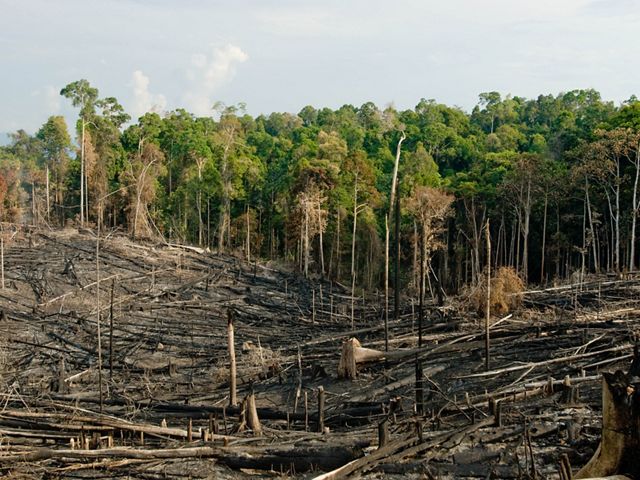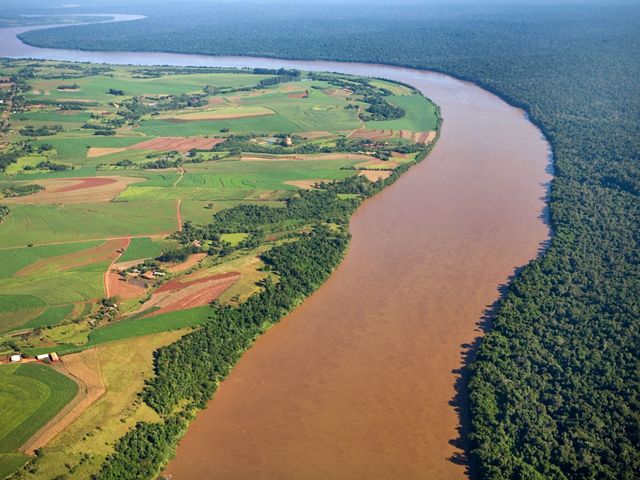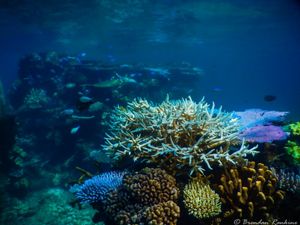By Jon Fisher , Senior Conservation Scientist, Center for Sustainability Science
Key Takeaways
A common agreement on what constitutes a forest could help end deforestation and loss of habitat.
The lack of clarity around defining forests generates difficulties in how we measure deforestation — and in turn, how we stop it. Does a patch of brand-new seedlings count as a “forest”? Should we count three trees or three hundred? What about woodlands with lots of open grassy clearings?
The Accountability Framework initiative, a new global coalition composed of NGOs representing diverse perspectives, was formed to provide clear, robust, and consistent guidelines for corporate commitments to end deforestation and habitat conversion.
We can agree that deforestation continues to be a massive global problem — in 2016, the world lost over 29.7 million hectares (73.4 million acres) of tree cover, an area almost as large as Italy. That doesn’t even include the loss of grasslands, wetlands, and other important ecosystems.
What exactly is deforestation? For that matter, what is a forest?
This is not just semantics. The lack of clarity around defining forests generates difficulties in how we measure deforestation — and in turn, how we stop it. Does a patch of brand-new seedlings count as a “forest”? Should we count three trees or three hundred? What about woodlands with lots of open grassy clearings? And some trees are lost each year due to forest fires or log harvesting, but the forest will regrow. We generally don’t count that as deforestation, but it can look similar.
These details might seem arcane and unimportant, but in fact they matter greatly to the cause of preventing deforestation. If we can’t agree on what a forest is and is not, then we can’t determine when forests have been converted, nor effectively prevent this conversion.

Before it's Too Late
The environment is facing big challenges, you can help us protect precious habitat.
Donate nowAgriculture is a primary driver of deforestation and habitat conversion, and companies that produce or buy commodities like beef and soybeans (among many others) have a critical role to play in safeguarding forests. Hundreds of companies worldwide have recognised the issue of deforestation linked to their commodity supply chains and have made pledges to address it.
But the confusion around what exactly we need to change and how to get there has slowed this process. Companies don’t always know what’s expected of them, nor how to implement and measure progress.
The Accountability Framework initiative, a new global coalition composed of NGOs representing diverse perspectives, was formed to provide clear, robust, and consistent guidelines for corporate commitments to end deforestation and habitat conversion. This strategic collaboration ensured that the framework borrowed from commonly accepted practices and builds on existing efforts. It also allows for differences by commodity, region and type of company. At the same time, the framework provides a common set of norms, definitions, and guidance for setting, implementing, and monitoring ethical supply chain commitments — including commitments to halt deforestation and ecosystem conversion while respecting human rights.
This new clarity and consensus on how to achieve deforestation-free commodity supply chains comes at a critical moment. Many companies have committed to being ‘deforestation-free’ by 2020 and the United Nations’ New York Declaration on Forests called for aggressive efforts to end it by 2030. The Accountability Framework is a tool to help stop us all going around in circles and define success in the same way.
In 2020, countries will refocus their efforts on protecting biodiversity and assessing how far they have progressed their climate goals. A recent study by The Nature Conservancy and partners found that ending deforestation could save up to 3.6 billion tons of carbon emissions (CO2e) each year — but it won’t be easy. That’s as much impact as switching 137 billion lightbulbs to LED, or taking 765 million cars and trucks off the road.
Other “natural climate solutions” — like replanting and improving how we manage forests and avoiding wetland conversion — could tackle a third of global greenhouse gas reductions needed by 2030 to stay on track with the Paris Agreement to keep global temperatures increases well below 2°C. We already know the when, where, and what of climate change; tools like the Accountability Framework help us answer the how.

We’re off to a good start: In December 2018, the Accountability Framework initiative (AFi) released a full draft of the Accountability Framework for public consultation. Since then we have been ‘workshopping’ it with companies, governments, civil society organisations, and other stakeholders. We are looking for input to help shape the Framework’s further development.
The first version of the Framework is expected to be launched in April 2019. To receive updates and announcements of the launch, please subscribe.
Originally posted on Mongabay
February 20, 2019
View Original
Stand With Us to Protect Our Planet
A sustainable path is possible, but only if we stand together to take urgent action.
Global Insights
Check out our latest thinking and real-world solutions to some of the most complex challenges facing people and the planet today.



